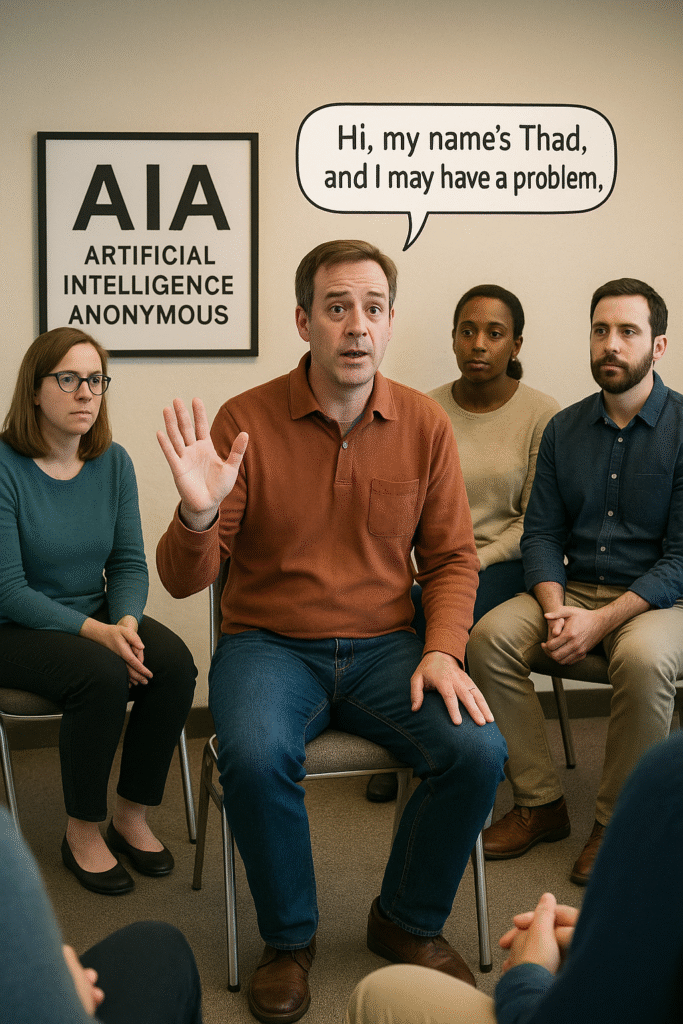
Hi, my name’s Thad, and I may have a problem.
It started innocently. A quick query here, a clever prompt there. Just a bit of ChatGPT to help draft a tricky email. Maybe a touch of Claude to bounce around architecture ideas. I told myself it was just research. “Everyone uses AI,” I said. “I can stop whenever I want.”
But here I am, months later, building iPhone apps in Pythonista, automating routines with N8N, and crafting tools for tyre pressure tracking, gate code management, and bin collection reminders in Claude and Replit. I’ve gone from CTO to something dangerously close to… a developer.
And I love it. My wife, perhaps, a little less so.
I now refer to this condition as AIA: Artificial Intelligence Anonymous — a support group for those of us who intended to dabble and ended up rebuilding our lives one script at a time.
Is This What Being a Developer Feels Like?
Because I’ve got to say… it’s a rush.
There’s something intoxicating about taking a rough idea — often from a napkin or a 3am thought spiral — and turning it into a functional app by breakfast. The friction between ideation and execution is melting. The old lag — dependency on others, prioritisation meetings, waiting — it’s gone.
And here’s the revelation:
I’ve spent years around two distinct groups — the idea generators and the implementers. One dreams, the other delivers. And the overlap? Historically, very slim.
But now, those who dream can also deliver. Not because we’ve become pro coders, but because the barriers to delivery have dropped dramatically. With AI copilots, the bridge between vision and reality is now walkable by one person.
Of Course, There’s a Catch
Just because I can build a working prototype doesn’t mean I’ve replaced the experienced engineer. The next level — the production-grade, multi-user, high-availability solution — still belongs to the pros.
But I can now accelerate from zero to 60 without needing a pit crew. And that changes how I work — and what I choose to work on.
The Productivity High (and Crash?)
This addiction delivers a serious dopamine hit. The productivity gains are real. I’ve automated workflows, built mini-products, solved problems no vendor ever would — because they only mattered to me.
But like all highs, there’s risk. The risk of automating everything. Of losing sight of when not to build.
So yes, I may need AIA. But not because I’m spiraling.
Because we all might need a way to talk about how AI is reshaping how we work, express ideas, and build.
We’re entering an era where non-developers can build. Where ideas don’t have to wait for delivery pipelines. Where software creation may shift from a specialist skill… to a shared language.
I, for one, am all in. I’ll bring the tea to the next AIA meeting.


